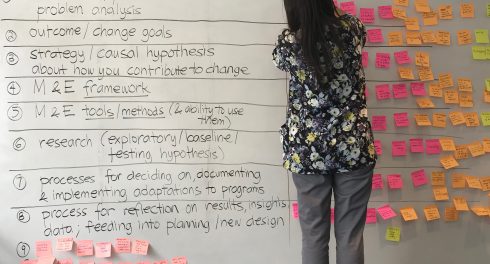
Photo: Unsplash
Definitions
Transparency and accountability need each other and can be mutually reinforcing. Together they enable citizens to have a say about issues that matter to them and a chance to influence decision-making and hold those making decisions to account.
Each concept is part of a strategy used for and by citizens to have the means, resources and opportunities to influence decision-making and affect development outcomes.
Below are definitions of the two terms as agreed by the Transparency and Accountability Initiative.
What is transparency?
As a principle, public officials, civil servants, managers and directors of companies and organisations and board trustees have a duty to act visibly, predictably and understandably to promote participation and accountability.
Simply making information available is not sufficient to achieve transparency. Large amounts of raw information in the public domain may breed opacity rather than transparency.
Information should be managed and published so that it is:
- Relevant and accessible: Information should be presented in plain and readily comprehensible language and formats appropriate for different stakeholders. It should retain the detail and disaggregation necessary for analysis, evaluation and participation. Information should be made available in ways appropriate to different audiences.
- Timely and accurate: Information should be made available in sufficient time to permit analysis, evaluation and engagement by relevant stakeholders. This means that information needs to be provided while planning as well as during and after the implementation of policies and programmes. Information should be managed so that it is up-to-date, accurate, and complete.
What is accountability?
Accountability means ensuring that officials in public, private and voluntary sector organisations are answerable for their actions and that there is redress when duties and commitments are not met.
The below is taken from a DFID practice paper and discussion note:
Accountability is an institutionalised (i.e. regular, established, accepted) relationship between different actors. One set of people/organisations are held to account (‘accountees’), and another set do the holding (‘accounters’).
There are many ways in which people and organisations might be held to account. It is useful to think of an accountability relationship as having up to four stages:
- Standard setting: setting out the behaviour expected of the ‘accountee’ and the criteria by which they might validly be judged.
- Investigation: exploring whether or not accountees have met the standards expected of them.
- Answerability:a process in which accountees are required to defend their actions, face sceptical questions, and generally explain themselves. This applies both to negative or critical as well as to positive feedback.
- Sanction: a process in which accountees are in some way punished for falling below the standards expected of them (or perhaps rewarded for achieving or exceeding them).
Expressed like this, the accountability process sounds very formal and like a legal trial, but most accountability sequences are not as formal, and/or do not include all these stages.
Jonathan Fox provides a useful definition of ‘accountability politics’ as ‘the arena of conflict over whether and how those in power are held publicly responsible for their decisions’. This helps to highlight that accountability is not only a set of institutional mechanisms or a checklist of procedures, but an arena of challenge, contestation and transformation.
Accountability can usefully be categorised in terms of horizontal, vertical, and diagonal mechanisms, with the condition however, that success is most often found not in one of those approaches alone, but in their interaction.
- Horizontal accountability consists of formal relationships within the state itself, whereby one state actor has the formal authority to demand explanations or impose penalties on another. Its focus is on internal checks and oversight processes. For example, executive agencies must explain their decisions to legislatures, and can in some cases be overruled or sanctioned for procedural violations.
- Vertical forms of accountability are those in which citizens and their associations play direct roles in holding the powerful to account. Elections are the formal institutional channel of vertical accountability. But there are also informal processes through which citizens organize themselves into associations capable of lobbying governments and private service providers, demanding explanations and threatening less formal sanctions like negative publicity.
- Diagonal accountability operates in a domain between the vertical and horizontal dimensions. It refers to the phenomenon of direct citizen engagement with horizontal accountability institutions when provoking better oversight of state actions. Citizens by-pass cumbersome or compromised formal accountability systems to engage in policy-making, budgeting, expenditure tracking and other similar activities.


